Hello friends:) Today, I wanted to hop on and tell you about how second graders are learning about main idea and author’s purpose this week. If you have been with us for a while, you know that we taught our kiddos how to find the main idea of a text earlier in the year. You can read more about how we did that HERE.
Now, we are ready to add finding and writing down our supporting details. We are also adding in how to find the author’s purpose for writing the text and how we know. It’s a lot to cram into two weeks but here’s a peek at how we do it.
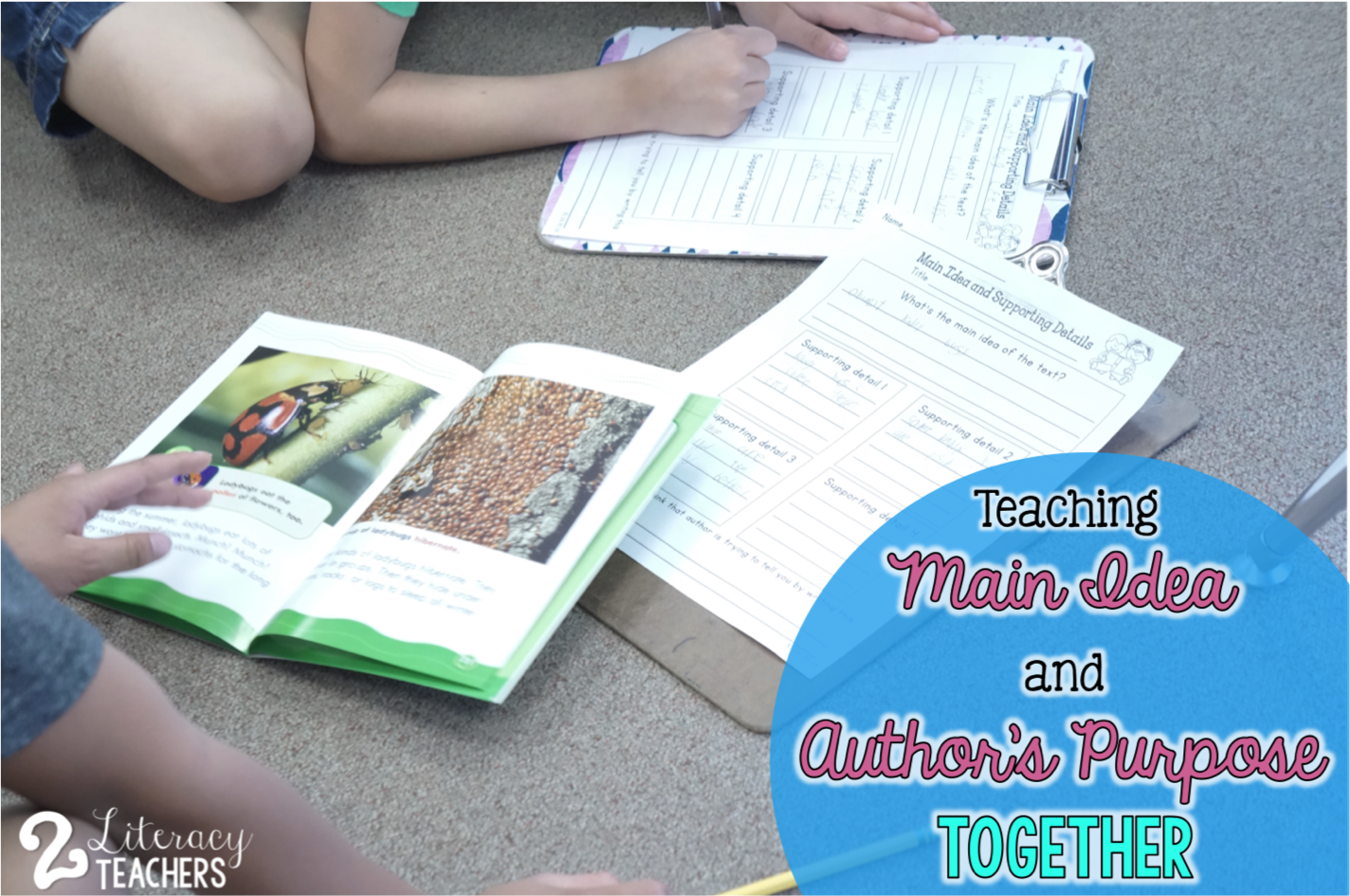
We start with author’s purpose first. This is usually pretty easy for most of them to grasp, which is why I like to put it first:) Here’s a look at the anchor we use for that…

We spend the first day sorting different books and titles under each category. With a little practice they pick it up really quickly. Once we have done this we are ready to move on to supporting details. I teach the kiddos to think of the main idea as an umbrella. It’s great to have a big umbrella (the main idea) but if you don’t have a good, long handle (supporting details) your umbrella is going to be hard to use. This is also the same analogy I use when teaching opinion.
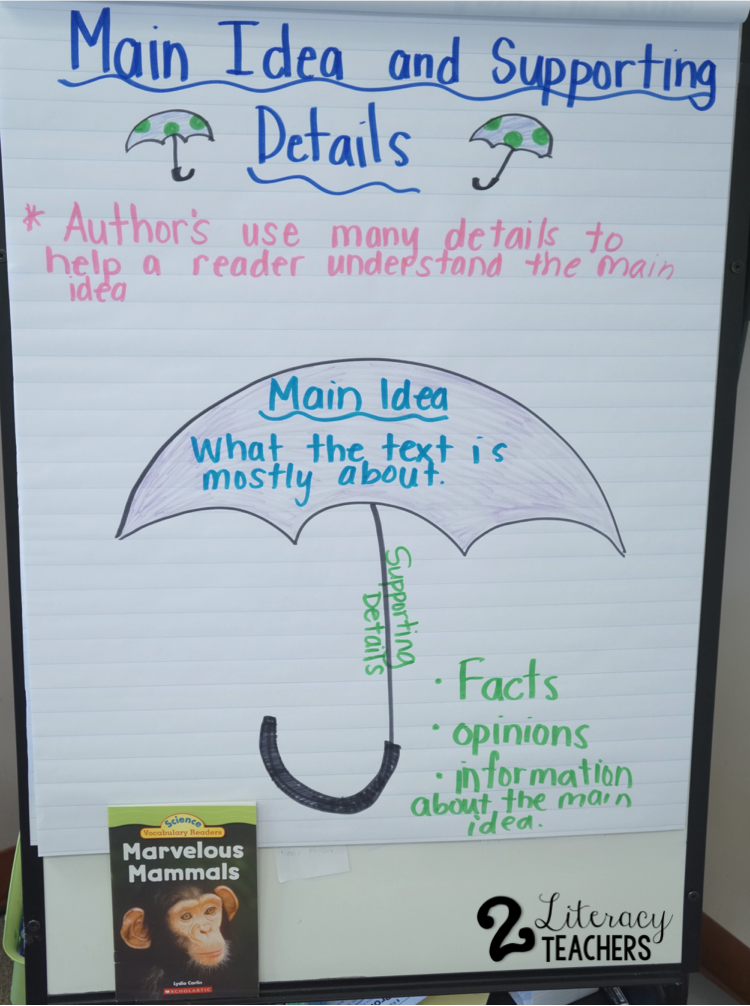
We LOVE these little science readers! They are so great when needing to work with informational text. We spend the first day talking about the main idea and supporting details. The kiddos then try with partners to find the main idea of the text, we used Marvelous Mammals, and try to see if they can find details in the text to support the main idea. Normally, we would do this as a whole class but we are running short on time so we have to speed it up a bit.
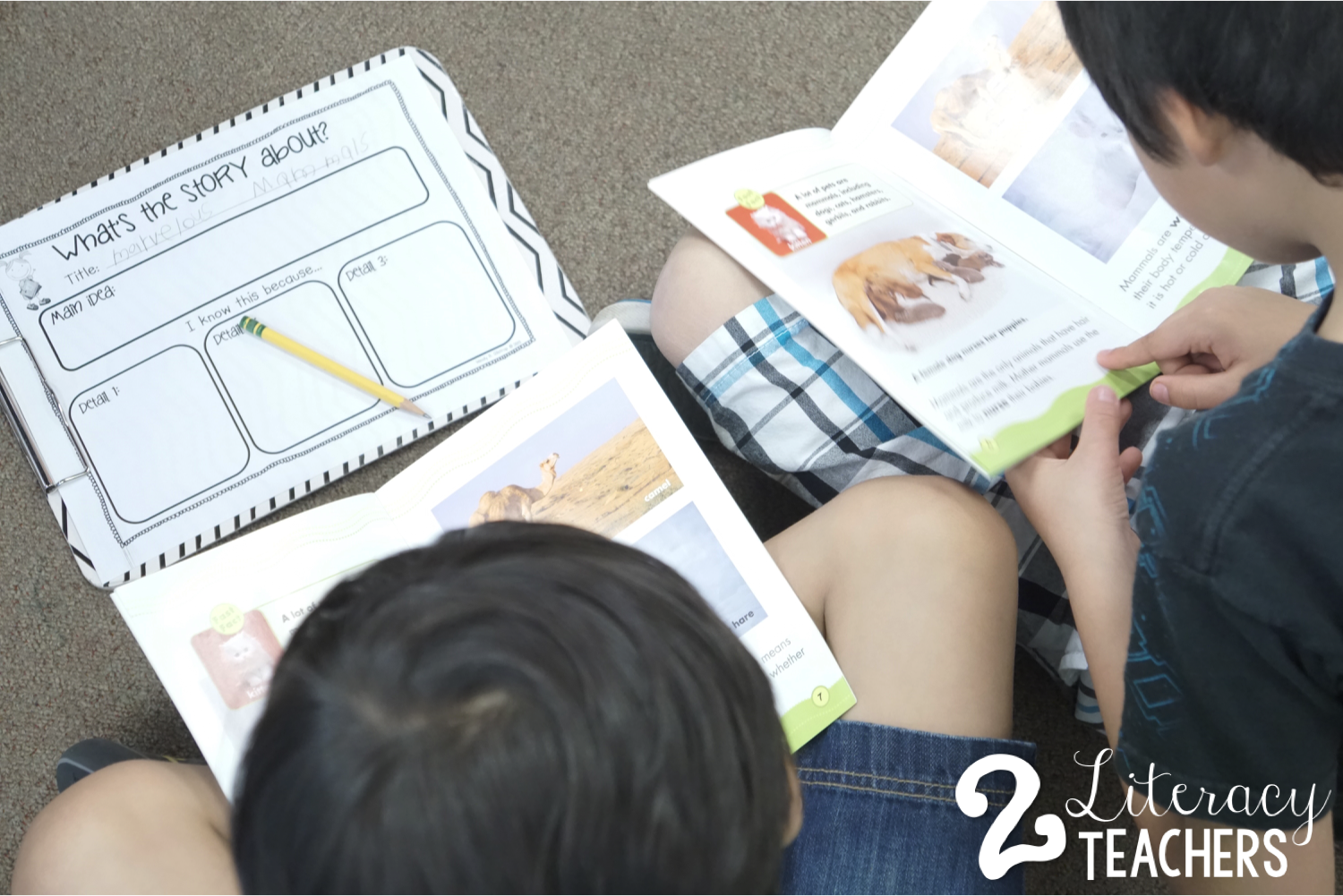
The kiddos used this graphic organizer which you can find in the Amy Lemons Main Idea pack, click HERE to get. This organizer only requires them to find three details, which is a bit easier for them to start with. When the kiddos paired up I had them pair low/high. Kiddos who have a good idea of main idea were paired with those who may be struggling a bit. I will say the this group is filled with kind kiddos who LOVE to help each other which makes partnering up a lot easier!
Once the kiddos have had a chance to fill out the organizer, we come back together and go through it. I model for them how I find supporting details and I also model how random facts that aren’t connected to the main idea shouldn’t be used. Every class has got the kiddo that shouts out a completely not connected detail! HA! I tried to nip it in the bud.
The next day, we were ready to put together both ideas, main idea and author’s purpose. We also worked on four supporting details instead of three. The kiddos worked in partners again, not the same partners as the previous day, that the kiddo’s used the book Ladybug Life Cycles.
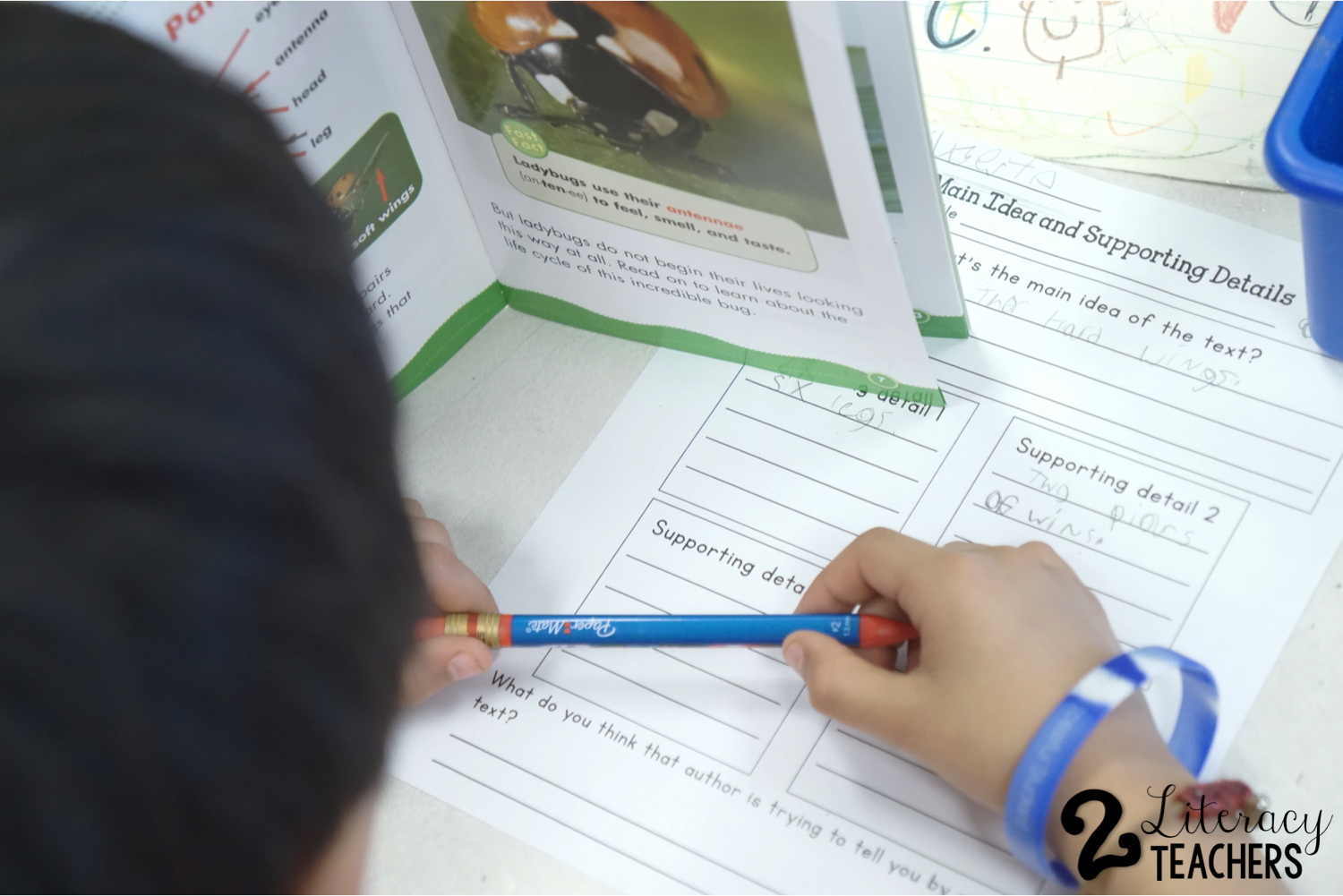
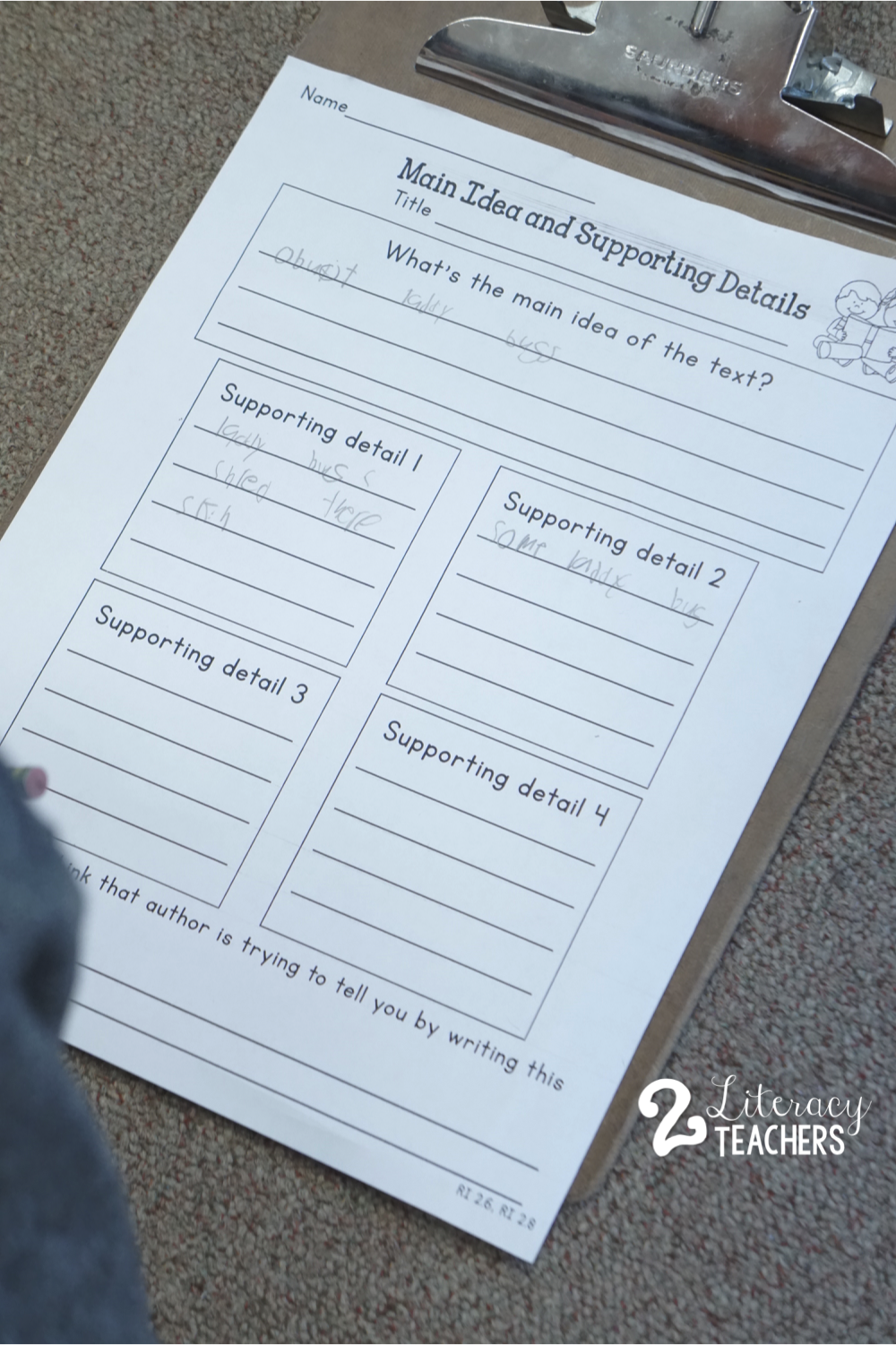
Here are some of the hiccups we ran into to…
The main idea has to be more than “about lady bugs.” We had to have a LONG chat about writing in complete sentences.
We can’t copy the text EXACTLY. We’ve been working on this ALL year!
We need to tell details that are ACTUALLY about the main idea…”Ladybugs are all ladies” Um. No.
“The author is trying to persuade us to like ladybugs because he wrote a book to teach us about ladybugs.” PALM TO FOREHEAD.
The next day we made a main idea myth poster. I put ALL of these examples on a poster, sorry I forgot to take a picture, and we went through them. It was like a “do this, not that” poster. It was pretty effective. We took an assessment on Friday with the graphic organizer shown above (with four details) and a Scholastic News. They did a pretty great job! There are a few, aren’t there always, that are still confused on the whole idea but we’ve got another whole week to keep practicing.
So there you have it! Hopefully, something here sparks an idea for you to teach your kiddos about main idea and author’s purpose! I hope you all have a great week!

